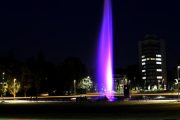Brief Introduction
Certification method of LED light source lumen maintenance rate measurement by lighting Engineering Association
The lighting engineering association approved the publication of the committee’s report. The revision proposal should comply with the relevant regulations of the lighting Engineering Association.
Lm-80 is suitable for packaging, array and module based on inorganic led. one Lm-80 is designed to guide the maintenance of optical output rather than any other failure mode. The term “source” in this document refers only to packaging, arrays and modules.
This identification method describes the procedure for operating LED light sources under controlled conditions, which aims to obtain the best reference data for the light output changes of lamps during their service life. These light sources must be operated on external auxiliary equipment.
LED usually has a long service life and can be used for 50,000 hours or more depending on the driving current and service conditions. As with all light sources, the light output from LED will gradually decrease with the output time. Unlike traditional light sources, LEDs do not fail completely. Therefore, over time, the lumen maintenance rate will lead to slower light output than expected in the specifications or required by the specifications, standards or rules.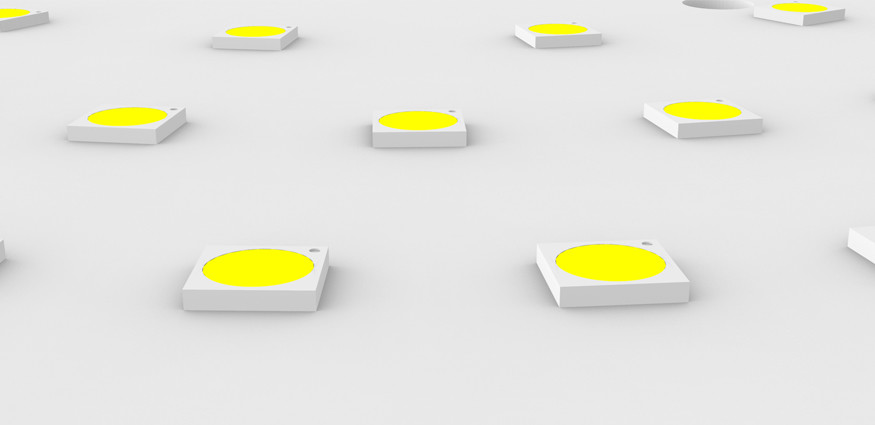
Over time, the spectrum emitted by the LED will gradually change, which will lead to unacceptable appearance or color rendering. These changes may affect the lumen maintenance rate, which is mainly due to the change of light output caused by the change of spectral energy distribution.
It is essential to understand the light output, efficiency and lumen maintenance rate, as well as the service life of these light sources. For LED light source photometric measurement, please refer to reference 2.1.2, LM-79. The term “service life” is often used to describe end of life conditions, such as when the lumen maintenance rate is reduced to a specified minimum. The standard establishes procedures for measuring the lumen maintenance rate.
The performance of LED light source is usually affected by variables, such as operating cycle, conditions of external equipment and device, ambient temperature, etc
Airflow and orientation. When multiple laboratories test, the design of test conditions and procedures should provide reference results.
The purpose of recommend to use this method is also to this end.
Scope of Application
This certification method is one of the successive certification methods of the North American Lighting Engineering Association. The purpose of this written method is to allow multiple laboratories to make reliable comparison of test results by developing a unified test method. This method solves the measurement of LED light source lumen maintenance rate test. The measurement method has been designed and proved to meet the lighting industry standards.
This document provides the measurement method of lumen maintenance rate of light source, including only led packaging, array and module. Lumen maintenance rate is the performance measured under controlled conditions. The performance is different in special applications. This method does not provide any guidance or make any suggestions for the estimation or extrapolation of the lumen maintenance rate beyond the limits of the actual measurement.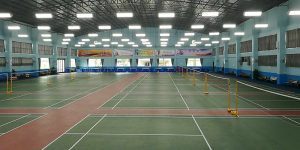
Related Definitions
Measuring instrument
Electronic measuring instruments are voltmeter, ammeter and power meter. The unit of temperature is centigrade, and the unit of luminosity is lumen.
LED light source
LED packages, arrays, or models operated by auxiliary drivers.
Lumen maintenance
Lumen maintenance is the luminous flux (usually expressed as a percentage of the maximum output) of the maintained output at any selected actual time. Lumen maintenance is the opposite of lumen landing.
Lumen maintenance life
The time, in hours, for a specified percentage of lumen descent or maintenance. The operation time does not include the actual time when the light source is repeatedly turned on or off and periodically turned on.
LED Light source failure
Failures such as failure to emit light, such as premature failures caused by production defects, are reported, but are not included in the report LED light source lumen maintenance calculation.
Rated lumen maintenance life (LP)
The actual operating time of the LED light source will be maintained as a percentage of the initial light output, such as L70 ( (hours) 70% — Time for maintenance of lumens,
Shell temperature (TS)
TS is the temperature of the thermocouple installation point on the LED light source package specified in the manufacturer’s package.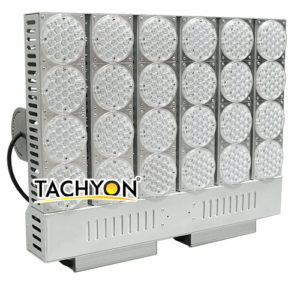
Environmental and Physical Conditions
Laboratory specifications suggest that the storage and test of LED light source should be carried out in a relatively clean environment. Before operation, the operation mark of the light source must be removed and the manufacturer’s operation instructions must be followed,such as: electrostatic discharge, ESD.
LED instrument marking
Each LED source must be tracked during the life test. The instrument can be distinguished by a label directly attached to it, a label that can be attached to it during transportation or evaluation, or a label that can be attached to the life test position during the life test.
The selected identification method will consider the effects of exposure to light and heat. Suitable marking methods or materials include: durable bar code, ceramic ink, high temperature marking, or any other method that can be periodically updated in the life test.
Sample
The sample selection of LED light source is very important, because the test value depends on the sample selection method, sample size, test conditions and other factors. The selected sample lamp source must be sufficient to represent all the products to be tested. In most cases, this sampling must be designated by the appropriate standards committee. Sampling methods and sample sizes should be reported.
environment condition
Vibration. The lamp shall not unduly swing or vibrate during the life test. Compared with other light sources, this is not a problem for LED.
Temperature and humidity
In photometric measurement, the operation of LED light source must be the minimum temperature of three shells under the same driving current. Must be 55 ° C and eighty-five ° C The third temperature is selected by the manufacturer. The manufacturer’s selected shell temperature and drive current must represent their expectations for the customer’s application and must be within the recommended operating temperature range. In the life test
During the process, the shell temperature must be controlled at- two ° C。 During the test, the ambient air temperature should be kept at – 5 ℃ ° Within C. The surrounding air should be controlled in the laboratory. During the whole life test, the humidity must be kept below 65 RH.
Airflow
In order to turn on and operate the light source properly,
The air flow must be minimized because the change of air flow will cause the change of heat flow characteristics. Because a certain amount of air flow is needed to avoid temperature stratification, attention must be paid to minimize the distance between the instrument and its immediate vicinity.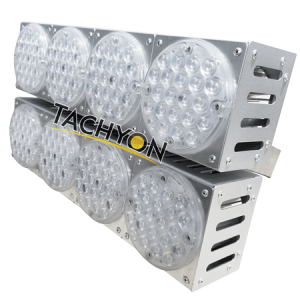
Electrical and Thermal Conditions
Input voltage and current
The input voltage must be equal to the rated input voltage (RMS) Same frequency as drive. When using DC current, DC current and pulsating voltage should not exceed 2% of DC output voltage.
voltage waveform
The power supply must have waveform voltage, so that the total harmonic distortion will not exceed 3% of the fundamental harmonic.
Input current regulation
During the life test, the input current must be controlled and adjusted at + 1-3% of the rated current value In the process of photometric measurement, it is the percentage of the rated current +/- 0.5%。 The driving current must remain constant throughout the operation of the LED light source. According to the manufacturer’s suggestion, the current can be reduced as a function of temperature. The purpose is to test led with the same current in practical operation.
Shell temperature
Must use ASTM E230 form one ” Special restrictions“ (< one point one ° C or 0.4%, Or any larger) thermocouple measurement system to monitor the case temperature. During the life test, the shell temperature must be controlled at- two ° C。 Ts Measure the shell temperature of LED instrument directly at the temperature measuring point of the original led instrument designated by the manufacturer t ( For example: thermocouple installation point). The radiator should be used according to the participating suggestions.
Test and Test Procedure
In the life test, the correct record of actual operation time is critical. If the actual time indicator, it must be placed in a specific test position, only if The time is accumulated only when the LED light source is powered on. In case of power failure at this location, the monitoring equipment shall not accumulate time. For the accuracy of time, video monitoring, current monitoring and other methods can be used to determine the actual operation time. All equipment must be calibrated according to the manufacturer’s instructions. Time uncertainty should be within the range of ± 0.5%.
Photometry
Photometric measurement must be carried out according to the correct laboratory method of LED light source under test. The luminous flux must be measured in the driving current used in the life test. Ideally, the drive current must initially be set to determine the manufacturer’s luminous flux measurement level.
Because the color stability in use is a very important parameter for lighting equipment, its chromaticity value must be determined. It is strongly recommended to use spectroradiometer to measure luminous flux and determine photometric and chromatic values.
Measuring temperature by Photometry
In lumen and chroma measurements, the ambient temperature must be set to 25C +/- 2℃. The test report must provide the whole test result. The ambient temperature of the range is used for photometric measurement. Before measurement, the LED light source must be set to room temperature.
Test Method for Lumen Maintenance of LED Light Source
Time and interval of lumen maintenance test
In the specified ambient temperature specified in 4.4 of the specification, the instrument must be driven for at least 6000 hours and data collected at least once every 1000 hours. In order to improve the prediction model, the best interval is 10000 hours.
Operation cycle
Unlike other light sources, turning on the power repeatedly will shorten the life and weaken the performance of LED It can be adjusted at a high speed without affecting the service life. However, the device and model must be driven under a stable current to avoid the influence of adjustment on the results. The driver method must be reported.
Record the fault
At least in each measurement interval, the failure of LED light source is detected by visual inspection or automatic monitoring. Each fault must be investigated to determine whether it is really caused by LED light source fault rather than improper function of auxiliary equipment or electronic connectors. Catastrophic events must be reported LED The light source failure is recorded in the experiment report.
Chroma
During the lumen maintenance test, the chromaticity must be measured at each photometric test interval, and the change of chromaticity must be measured and reported.
The report shall list all relevant information about the test conditions, type of equipment and type of LED light source tested. The test report shall include the following items:
- Number of LED light sources tested
- LED light source description
3 Auxiliary equipment description
4 Operation cycle
5 Environmental conditions, including airflow, temperature and relative humidity
6 Shell temperature (test point temperature)
7 Driving current of LED light source during service life test
- Initial luminous flux and forward voltage of photometric current measurement
- The data of lumen maintenance rate of single LED light source and the average value, standard deviation, minimum and maximum lumen maintenance rate of all LED light sources.
- Observation of LED light source failure, including failure condition and failure time.
- LED light source monitoring interval
- Uncertainty of photometric measurement
- Chromaticity changes reported over time.
Each test reports its test items. Test results shall be presented in tabular format.







